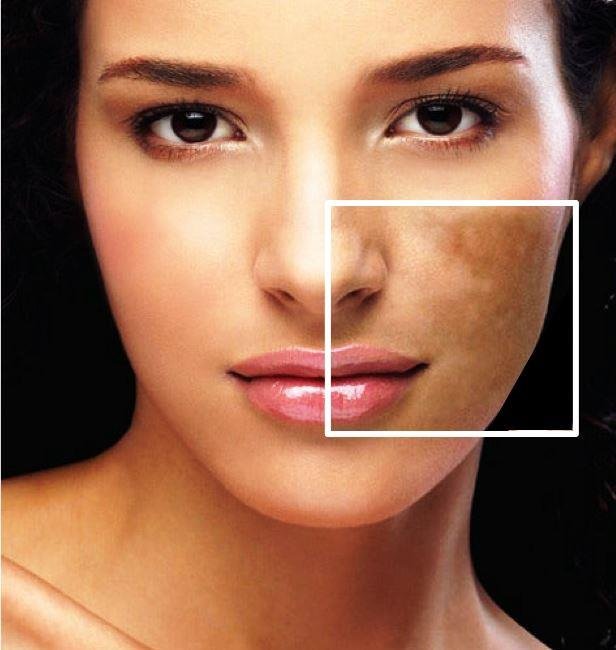Table of Contents
Introduction
Hyperpigmentation is a common skin condition that affects individuals with various skin tones, including black skin. It occurs when excess melanin, the pigment responsible for skin color, is produced in certain areas, leading to dark patches or spots. While hyperpigmentation can be challenging to treat, combining multiple therapies can enhance the effectiveness of treatment and provide more satisfactory results for individuals with black skin.

explore various combination therapies that can help maximize the outcomes of hyperpigmentation treatment in black skin.
Understanding Hyperpigmentation in Black Skin
Before delving into combination therapies, it’s essential to understand the unique characteristics of hyperpigmentation in black skin. Black skin has more melanin, making it prone to both post-inflammatory hyperpigmentation (PIH) and melasma. PIH can result from acne, eczema, or other inflammatory skin conditions, while melasma often occurs due to hormonal changes, sun exposure, or genetic factors. The increased melanin content in black skin can make these hyperpigmentation types more persistent and challenging to treat.
Combination Therapy Approaches
Topical Treatments Combined with Chemical Peels:
Topical treatments such as hydroquinone, retinoids, kojic acid, and azelaic acid can effectively target hyperpigmentation in black skin. When combined with chemical peels, which help to exfoliate the skin and enhance penetration of active ingredients, the overall treatment efficacy can be improved. Chemical peels containing alpha hydroxy acids (AHAs) or beta hydroxy acids (BHAs) are commonly used for hyperpigmentation treatment.

Laser Therapy Combined with Topical Agents:
Laser therapies, including intense pulsed light (IPL) and fractional laser treatments, can be beneficial for treating hyperpigmentation in black skin. Combining laser therapy with topical agents such as hydroquinone, corticosteroids, or retinoids can enhance the effects of the treatment. Laser therapy targets the excess melanin, while topical agents help regulate melanin production and reduce pigmentation.
Microneedling Combined with Depigmenting Agents:
Microneedling, a minimally invasive procedure that uses fine needles to create controlled micro-injuries in the skin, can stimulate collagen production and improve skin texture. When combined with depigmenting agents like tranexamic acid, vitamin C, or niacinamide, micro needling can effectively reduce hyperpigmentation in black skin. The micro-needling process enhances the absorption of depigmenting agents, making them more efficient in treating hyperpigmentation.
Chemical Peels Combined with Oral Medications:
In cases of severe or resistant hyperpigmentation, oral medications can be used in combination with chemical peels. Oral medications like tranexamic acid, glutathione, or vitamin E can work systemically to inhibit melanin production, while chemical peels focus on the external treatment of the affected areas. This combination approach can yield significant improvements in hyperpigmentation, particularly for individuals with black skin.

Important Considerations
While combination therapies can be effective in treating hyperpigmentation in black skin, it is crucial to keep the following considerations in mind:
- Professional Guidance: It is essential to consult a dermatologist or skincare professional experienced in treating hyperpigmentation in black skin. They can assess your specific condition and recommend the most suitable combination therapy for optimal results.
- Sun Protection: Sun exposure can worsen hyperpigmentation and hinder treatment progress. Applying a broad-spectrum sunscreen with a high SPF regularly is essential to protect the skin from harmful UV rays and prevent further pigmentation.
- Consistency and Patience: Hyperpigmentation treatment requires time and consistent effort. Combination therapies may take several weeks or even months to show noticeable improvements. It is important to adhere to the treatment regimen prescribed by your dermatologist and maintain realistic expectations.

Conclusion
Combination therapies provide a comprehensive and effective approach to treating hyperpigmentation in black skin. By combining different treatment modalities, such as topical agents, chemical peels, laser therapy, and micro-needling, along with appropriate oral medications, individuals with black skin can maximize the results and achieve significant improvements in hyperpigmentation.
However, it is crucial to seek professional guidance, practice sun protection, and remain consistent in the treatment process. With the right combination of therapy and proper care, achieving a more even and radiant complexion is possible for individuals with black skin affected by hyperpigmentation.
Learn More About Skin:-The Science Behind Chemical Peels: Understanding the Mechanisms and Benefits & Enzyme Peel Facial: Revealing Radiant Skin with Natural Enzymes